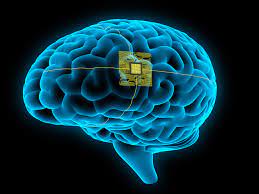Microsoft’s Innovative Approach: Protecting Users from AI Copyright Infringements
Introduction: The Intersection of AI and Copyright
As artificial intelligence (AI) continues to advance, it presents both opportunities and challenges in the realm of copyright protection. AI’s capabilities for content generation and manipulation have raised concerns about copyright infringement, particularly when AI-generated content bears resemblance to human-created works. In response to these challenges, Microsoft has taken a pioneering step by offering legal protection for users facing AI copyright infringements. This article explores the evolving landscape of AI-generated content, the issues of copyright infringement, and Microsoft’s innovative solution, organized into the following headings:
I. The Rise of AI-Generated Content
- AI Content Creation: AI has the ability to generate a wide range of content, from text and images to music and videos, often with impressive levels of sophistication.
- Utility and Creativity: AI-generated content serves various purposes, from automating content production to enabling new forms of creative expression.
- Challenges Arise: As AI-generated content becomes more prevalent, challenges related to copyright infringement and intellectual property rights have come to the forefront.
II. Copyright Infringement in the Age of AI
- AI’s Replication Abilities: AI can analyze and replicate patterns from existing works, leading to instances where AI-generated content closely resembles copyrighted material.
- Unclear Ownership: Determining the ownership of AI-generated content can be complex, especially when AI systems have been trained on vast datasets of copyrighted material.
- Fair Use and Transformative Works: The legal concept of fair use and the transformative nature of AI-generated content further complicate copyright enforcement.
III. Microsoft’s Proactive Approach
- AI’s Potential for Good: Microsoft recognizes AI’s potential for positive contributions and innovation. However, the company is also committed to addressing potential challenges proactively.
- Legal Protection: Microsoft offers legal protection to users who may inadvertently encounter copyright issues with AI-generated content while using Microsoft’s AI services and tools.
- Navigating Legal Complexities: Microsoft’s legal protection extends to helping users navigate the legal complexities surrounding AI-generated content and copyright.
IV. The Framework of Legal Protection
- Assistance and Guidance: Microsoft provides assistance and guidance to users facing AI copyright disputes, including access to legal experts and resources.
- Case Evaluation: Users can seek Microsoft’s evaluation of their copyright dispute cases to determine the best course of action, which may include defending the user’s rights.
- Collaborative Solutions: Microsoft encourages collaborative solutions that balance the protection of intellectual property rights with fostering AI innovation and creativity.
V. Ethical Considerations
- Transparency: Microsoft emphasizes the importance of transparency in AI-generated content. Users are encouraged to be aware of the origins and nature of AI-generated works.
- User Responsibility: Users are reminded of their responsibility to ensure that their use of AI-generated content aligns with copyright laws and ethical standards.
- Education and Awareness: Microsoft is committed to raising awareness about copyright and AI ethics among its users.
VI. The Broader Implications
- Industry-Wide Impact: Microsoft’s approach has the potential to set industry standards and influence how other AI providers address AI-generated copyright concerns.
- Legal Precedents: As AI copyright cases emerge, Microsoft’s legal protection framework could help establish legal precedents and interpretations in this evolving area of law.
- Balancing Act: The challenge lies in striking a balance between protecting intellectual property rights and fostering innovation and creativity in the AI landscape.
VII. Conclusion: Paving the Way for Ethical AI
- Microsoft’s Leadership: Microsoft’s proactive approach to AI copyright protection showcases the company’s leadership in the responsible development and deployment of AI technologies.
- User-Centric Focus: By prioritizing user needs and legal protection, Microsoft is contributing to a more user-centric and ethically grounded AI ecosystem.
- Collaboration and Regulation: As AI continues to advance, collaboration among technology companies, legal experts, and policymakers, along with the development of regulatory frameworks, will be crucial to address the complex challenges of AI-generated content and copyright.
In a world where AI’s influence on content creation is expanding, Microsoft’s commitment to legal protection for users represents a significant step towards ensuring that AI innovation aligns with ethical and legal standards. As the intersection of AI and copyright continues to evolve, Microsoft’s framework serves as a model for responsible AI development and user support in an increasingly complex digital landscape.


